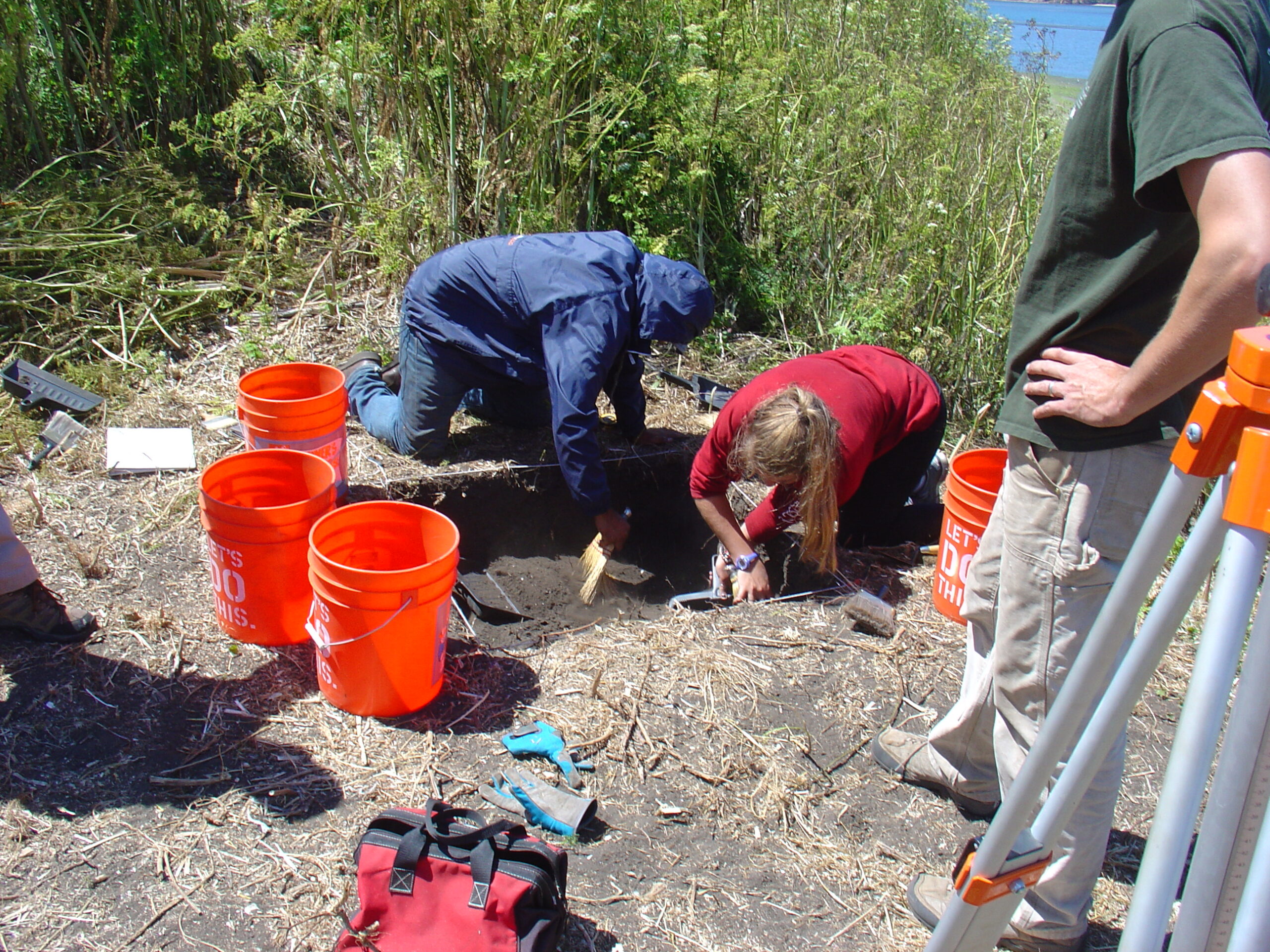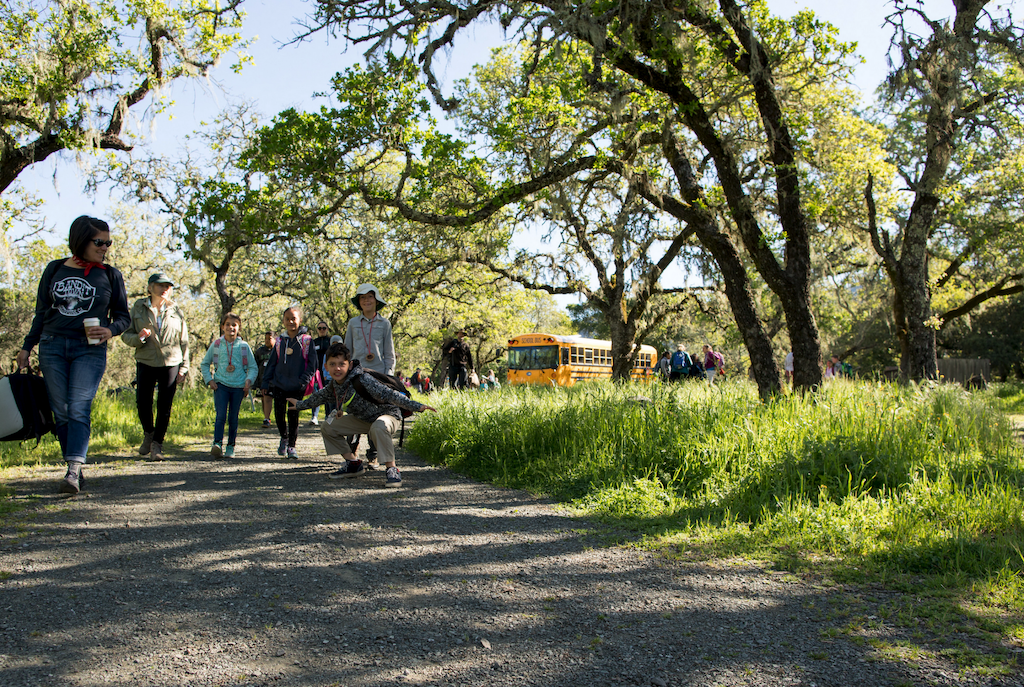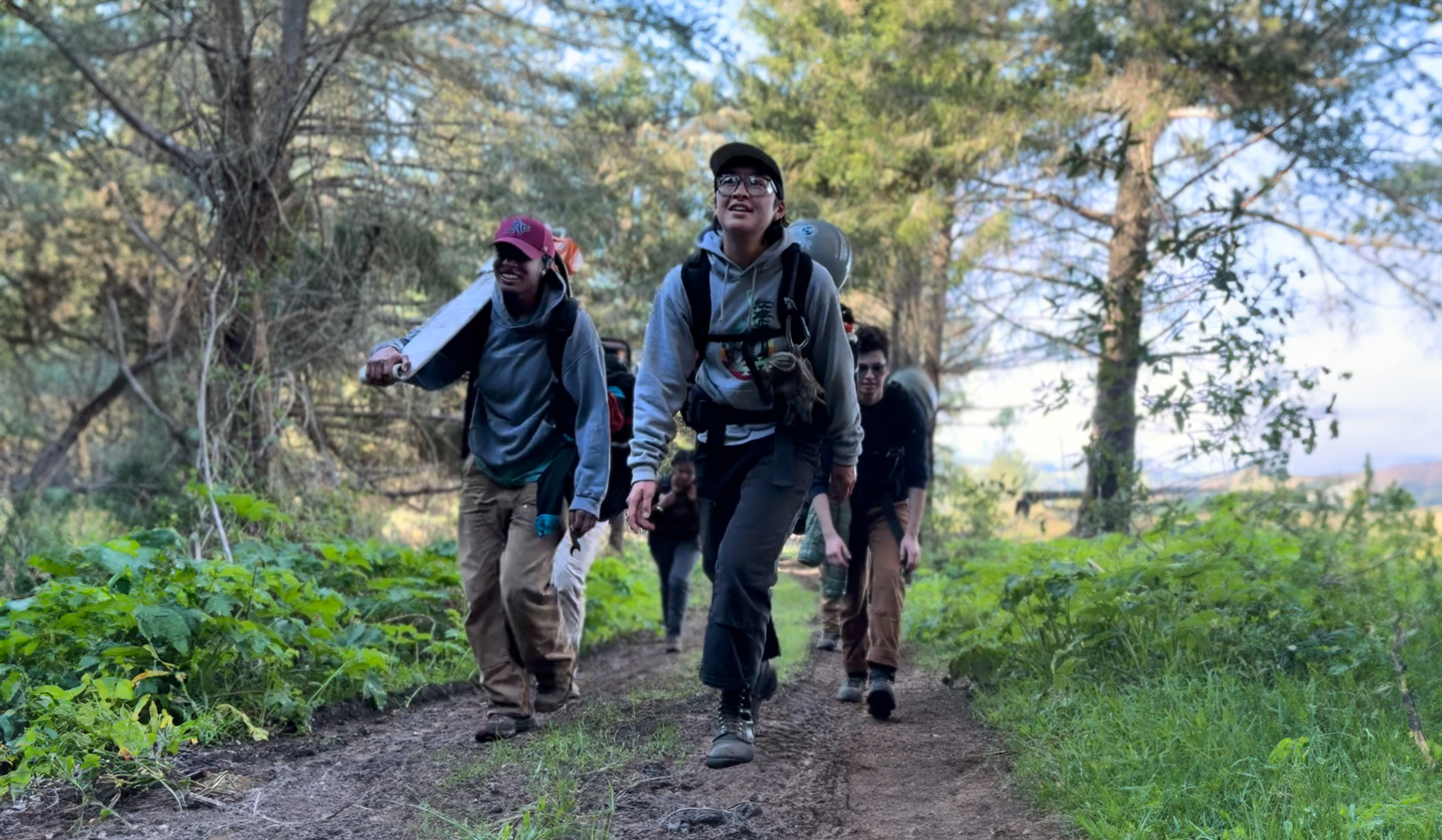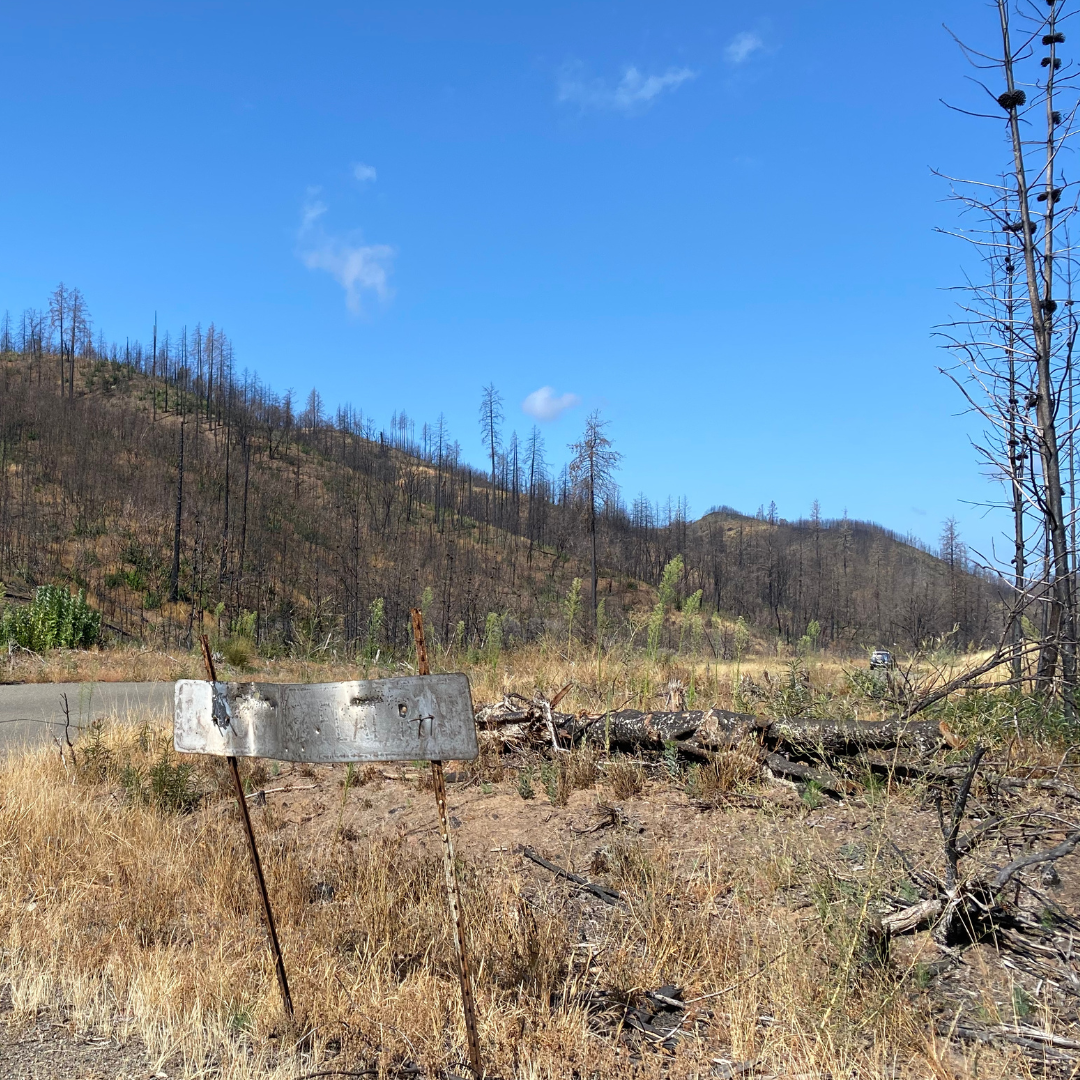ACR’s Conservation Science staff was pleased to host Dr. Lee M. Panich, Santa Clara University, and Dr. Tsim D. Schneider, UC Santa Cruz, along with several undergrad and graduate students performing fieldwork in July. In cooperation with the Federated Indians of Graton Rancheria, Drs. Schneider and Panich are co-directing this archaeological project in Marin County examining social resiliency and change among mission-era (AD 1776-1830s) and post-mission Native American communities. The team’s summer acheology fieldwork is focused on Toms Point, an ACR preserve. This is the second season of fieldwork for Tsim and Lee, this year working from July 5 – 24th.
During the time when Spanish missions operated in the San Francisco Bay area, research shows that California Indians found ways to keep in touch with culturally significant places and landscapes, contrary to widely circulated accounts of Native village abandonment and cultural demise at the missions. Some Coast Miwok, for example, avoided missions and other colonial enterprises by seeking refuge in remote areas; others devised innovative solutions to keep a foot planted in both native and new worlds. Importantly, the team’s prior research found that the many “prehistoric” spaces found across California were also venues of ongoing cultural significance for Native communities during the more recent past; yet, few researchers have examined just how and where this was possible.
Their project seeks to locate and study one such community on Toms Point using archaeological techniques and existing collections from previous archaeological work. Toms Point is the location of an important post-mission community of Indians working for George Thomas Wood (or, “Tom Vaquero”) during the 1840s and 1850s. Very little is known about who lived at Toms Point, what they did, and for how long. It is clear however that Toms Point, like much of Tomales Bay, was a refuge where Coast Miwok and other Indian families remained or returned after the missions closed. In researching archaeological sites at Toms Point, some of the team’s major research questions are:
● What archaeological sites are present at Toms Point? How old are they?
● Who was Tom Vaquero? Where did he live? Who worked for Tom Vaquero and where did they live?
● If Toms Point was occupied during the 1840s and 1850s, are there structures, cooking features, and other debris associated with daily activities there? In what ways did these buildings, features, and materials change or stay the same over time?
● Did Coast Miwok at Toms Point keep or revise social and trade networks before, during, and after contact with Spanish missions or the Russian colony of Fort Ross? And, did people living at Toms Point interact with or remain autonomous from colonial enterprises? How and to what end?
During the summer season, the team excavated three sites on Toms Point, chosen with the help of older archeological records and with the use of ground penetrating radar, which uses radar pulses to image the ground. Working in a manner to be as noninvasive and undisruptive to the landscape as possible, the crew found cultural materials, likely from the early 1800’s, when Tom Vaquero managed the land and had many Miwok people working for him. Items uncovered include plates, buttons, class, horse shoes, and more.
We look forward to the team’s future findings and will post updates to this blog as details are released.





